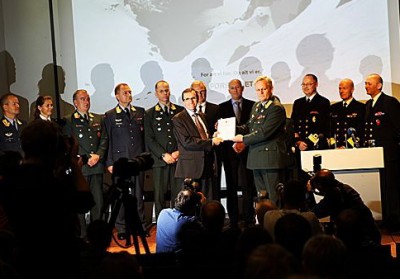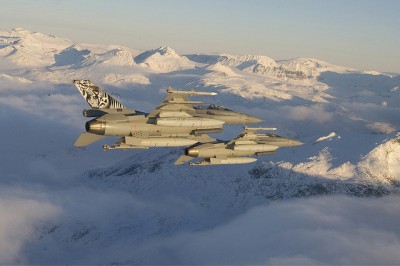Norway’s top military brass must prepare for battle with politicians and members of their own ranks, after presenting their advice and specific long-term plans for how the country’s defense forces should be organized to boost preparedness at home. Defense experts predict the plans will be revised.

Defense chief Harald Sunde, a general in Norway’s army, formally presented his report entitled Fagmilitære Råd (Professional Military Advice) to new Defense Minister Espen Barth Eide on Thursday. The report contains several controversial proposals, including some that seem to reduce military presence in Northern Norway by moving key functions like the stationing of new fighter jets farther south. It also proposes major cuts in Norway’s military reserve force, Heimevernet, with Sunde wanting to cut its on-call troops by a third, from 45,000 to 30,000.
The changes are seen as making Norway’s military more professional, and less reliant on the traditional, obligatory and not least short-term drafting of young recruits and reservists. Newspaper Aftenposten reported that Sunde has acknowledged, through the report, a current lack of domestic preparedness at a time when that’s high on the public agenda following the terrorist attacks of July 22. Sunde believes his proposals will better prepare Norway for defense needs and military obligations both at home and abroad.
Asked whether politicians will accept proposals that would “professionalize” the Norwegian Army, its chief, Per Sverre Opedal, responded: “They have to choose. Do they want a Norwegian army at home that’s ready for action all the time, or one that can provide soldiers after a few days, or weeks?”
The plans to slash Heimevernet in return for other measures, like making the Royal Guards in Norway less ceremonial and more battle-ready for use in emergency situations, met predictable opposition from Heimevernet’s own leaders. They argue that reserve forces are more important than ever. Sunde, however, wants to pare them down into four regions with focus on Oslo and Kongsberg. A division at Terningmoen near Elverum would be shut down.

Another proposal, to move the base for Norway’s fighter jet fleet from its present location at Bodø to the Øland naval air station, farther south near Trondheim, sparked a lot of negative reaction on Norwegian Broadcasting (NRK) national nightly news program Dagsrevyen. While officials in Øland welcomed the pending move, military personnel based in Bodø opposed it, and Air Force officers have worried as well that such a move would reduce military presence just as Norway’s nordområdene (Northern Areas) have high political priority. Sunde claims, however, that the new F-35 jets on order have adequate range to be able to patrol the north from Ørland, which he sees as a more central location. Sunde said that military air bases at Banak, Bardufoss and Andøya would be maintained.
Additional measures would close radar and control stations at Mågerø and Sørreisa, while the northern brigade would be transformed from two large battalions made up of young drafted soldiers (who generally leave military service after their obligatory first year) into one professional battalion along the lines of Norway’s Telemark Battalion, which long has been active in international operations. The new northern battalion would feature some drafted soldiers but mostly be made up of those who have chosen military careers.
Sunde believes this would give Norway “continual ability” to take on international military assignments for NATO without weakening its domestic forces. The current set-up, he thinks, yields operational periods that are much too short after basic training.
Other proposals call for the military portion of the airport at Rygge, near Moss in southern Norway, to become purely a helicopter base. Another unit now handling information and data networks would become its own branch of the military called Cyberforsvaret (Cyber Defense).
The military report will now move on to hearings and debate in Parliament, where the proposals to move from Bodø and reduce Heimevernet are expected to meet political opposition. Defense Minister Espen Barth Eide thanked Sunde and his staff for the report, calling it a result of “comprehensive and inclusive process,” and promised it would be read in detail. Local politicians in Northern Norway were already bashing it, though, claiming Sunde’s proposals would leave several areas “naked” for enemy attack. They fear local job losses as well. Ole Henrik Hjartøy, mayor of Bodø, told TV2, for example, that it was “completely unthinkable” to not have a fighter jet base in Northern Norway.
“Based on experience, all professional military advice has been somewhat adjusted under political handling,” Ine Marie Eriksen Søreide of the Conservative Party, leader of the parliament’s committee on foreign relations and defense, told newspaper Dagsavisen. Added Hjartøy: “It’s now the battle really begins.”
Views and News from Norway/Nina Berglund
Please support our stories by clicking on the “Donate” button now:

